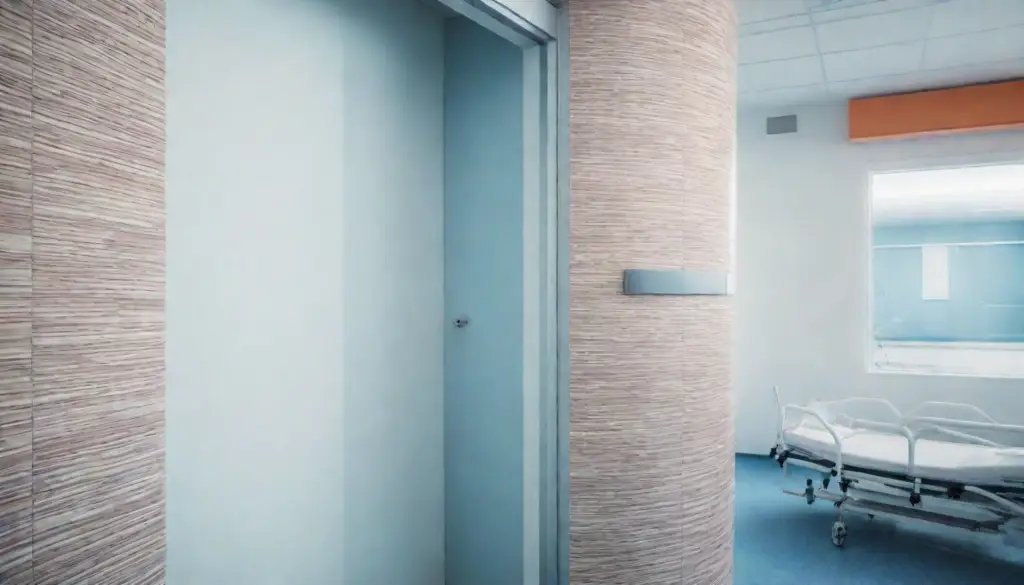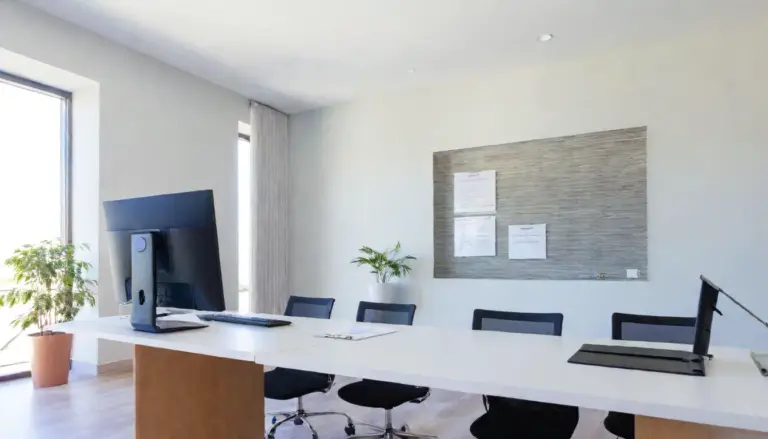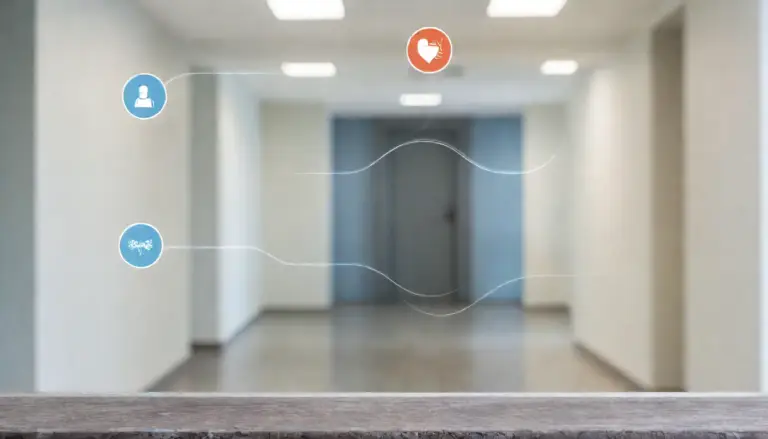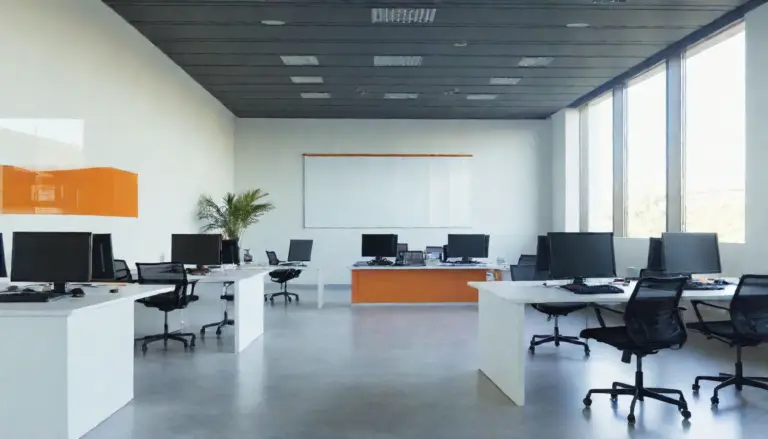The sound of beeping monitors, conversations, and other noises in the hospital can make it hard to relax and focus on anything else. This is where sound masking technology can help.
Sound masking is a way of reducing the sound of conversations and other noises in a given space. It works by adding a low-level background noise that is barely audible to humans, but just enough to reduce the amount of sound that can travel between rooms and hallways. This helps create a more comfortable environment, and can even lead to increased patient satisfaction.
This technology has been used in hospitals and other healthcare facilities for many years, but its importance has become more apparent as healthcare providers have had to adjust to the changing needs of patients during the pandemic.
Understanding the Impact of Noise in Healthcare Settings
Hospitals and clinics are full of noise, from medical equipment to conversations between patients and staff. Excessive noise can harm patient care and overall healthcare outcomes. It can cause distraction and stress, leading to errors in diagnosis and treatment.
Moreover, it can create a feeling of discomfort for patients and staff alike, hindering their ability to focus on healing and well-being. The need for a noise-reduced environment is essential to ensure the best possible outcomes for all.
Noise Impacts Health
Conversations, medical equipment, telephones, and mechanical and paging systems all contribute to the noise. This can be a real source of stress for patients, visitors, and staff. Studies have even identified noise as a health hazard, with effects like increased blood pressure, elevated heart rate, accelerated metabolism, and disturbed sleep.
Noise Interrupts Sleep
Sleep is a vital part of the healing process, but unfortunately, hospital noise often gets in the way. In terms of sleep disruption, it can take the form of late bedtimes, lighter sleep stages, tossing and turning, frequent awakenings, and changes to your cardiovascular system.
Exploring the Benefits of Sound Masking in Healthcare
Playing low-level background noise creates a more calming environment that is conducive to healing, while also protecting sensitive conversations from prying ears. In addition, sound masking can also assist with staff performance by helping to reduce fatigue and stress levels.
Noise reduction strategies can help to reduce the effect of these noise sources. The following are some strategies that can be implemented:
- Installing soundproofing materials like walls, windows, and doors.
- Using acoustic panels or soundproofing foam to reduce reverberation in the room.
- Investing in quieter medical equipment, such as newer models that produce less noise.
- Restricting the use of telephones and pagers to designated areas where they will not disrupt patient care.
- Limiting conversation volume in patient rooms and public areas.
- Establishing quiet hours in patient rooms and common areas during
- Utilizing noise canceling technology such as white noise or specialized headphones to reduce background noise from conversations and equipment.
Enhanced Patient Comfort and Satisfaction
Sound masking technology creates a peaceful atmosphere which helps to reduce stress and anxiety, and improve the overall patient experience. Additionally, sound masking technology can be used in conjunction with other sound-reducing techniques, such as acoustic panels and soundproofing materials, for even more effective noise control.
Improved Communication and Staff Performance
Excessive noise can hinder effective communication among healthcare staff, leading to miscommunication and potential medical errors. To combat this, sound masking can be used to create a more conducive environment for clear communication.
This technology helps to reduce sound distractions and create a calmer, quieter atmosphere, making it easier for healthcare staff to hear and understand each other. Improved communication not only increases staff performance and patient safety but also helps create a more positive work environment for everyone involved.
Protection of Patient Privacy and Confidentiality
Privacy and confidentiality are of utmost importance in healthcare settings, and sound masking technology is an effective tool to protect patient information. Sound masking helps to mask conversations and maintain the privacy of patients by reducing ambient noise in a healthcare environment.
The Health Insurance Portability and Accountability Act (HIPAA) is designed to ensure the confidentiality of patients’ health information, particularly in the era of digital medical records. Consequently, healthcare institutes should take reasonable measures to keep discussions related to people’s health or treatment private.
This technology helps ensure regulatory compliance by protecting sensitive information and providing a safe environment for patients. Furthermore, sound masking helps build trust with patients as they can be confident that their information is secure.
Implementing Sound Masking Solutions in Healthcare Facilities
There are different types of sound masking systems available, each with its unique benefits. These technologies include white noise, broadband noise, and pink noise systems.
- White noise systems are designed to provide uniform sound coverage throughout a room and are typically used in private spaces such as offices or treatment rooms.
- Broadband noise systems create a more focused sound masking pattern, which is ideal for larger spaces such as lobbies.
- Pink noise systems are designed to reduce echoes and reverberations in large areas such as auditoriums. Regardless of the type of sound masking system chosen, it is important to consider the size of the space, and its application to various healthcare environments.
Sound masking is not the ideal choice for every area of a healthcare facility, but some areas should be prioritized. Waiting rooms, for instance, are large open spaces that often host private conversations that should not be overheard. Sound masking can be used to cover the space and protect the privacy of those involved.
Patient rooms should also be considered, as sound masking can reduce the chances of sound carrying into other rooms, while also creating a peaceful atmosphere for recovery. Exams and other procedures are also times when sound masking can provide privacy for both patients and staff.
Practically any place where employees and patients are discussing health details should have sound masking installed for the sake of HIPAA compliance. This is especially important in administrative areas, where sensitive patient information is constantly being handled.
When selecting and installing sound masking technology, it is important to ensure that the technology will effectively meet the needs of the environment. It’s also essential to consider the cost and maintenance requirements of the sound masking system you choose. Thanks to a team of dedicated engineers, our sound masking technology requires minimal maintenance.
Choose Teksetra for Sound Masking Technology
Teksetra’s sound masking is the perfect solution to any noise problem – it adds an unobtrusive sound (pink noise) to the room. This cost-effective technology makes distracting sounds less noticeable, which increases employee productivity and improves patient and employee satisfaction. So, why not consider using sound masking technology to make experiences and outcomes better for patients?
Interested in learning more? Our AV specialists would be happy to answer any questions you may have!












